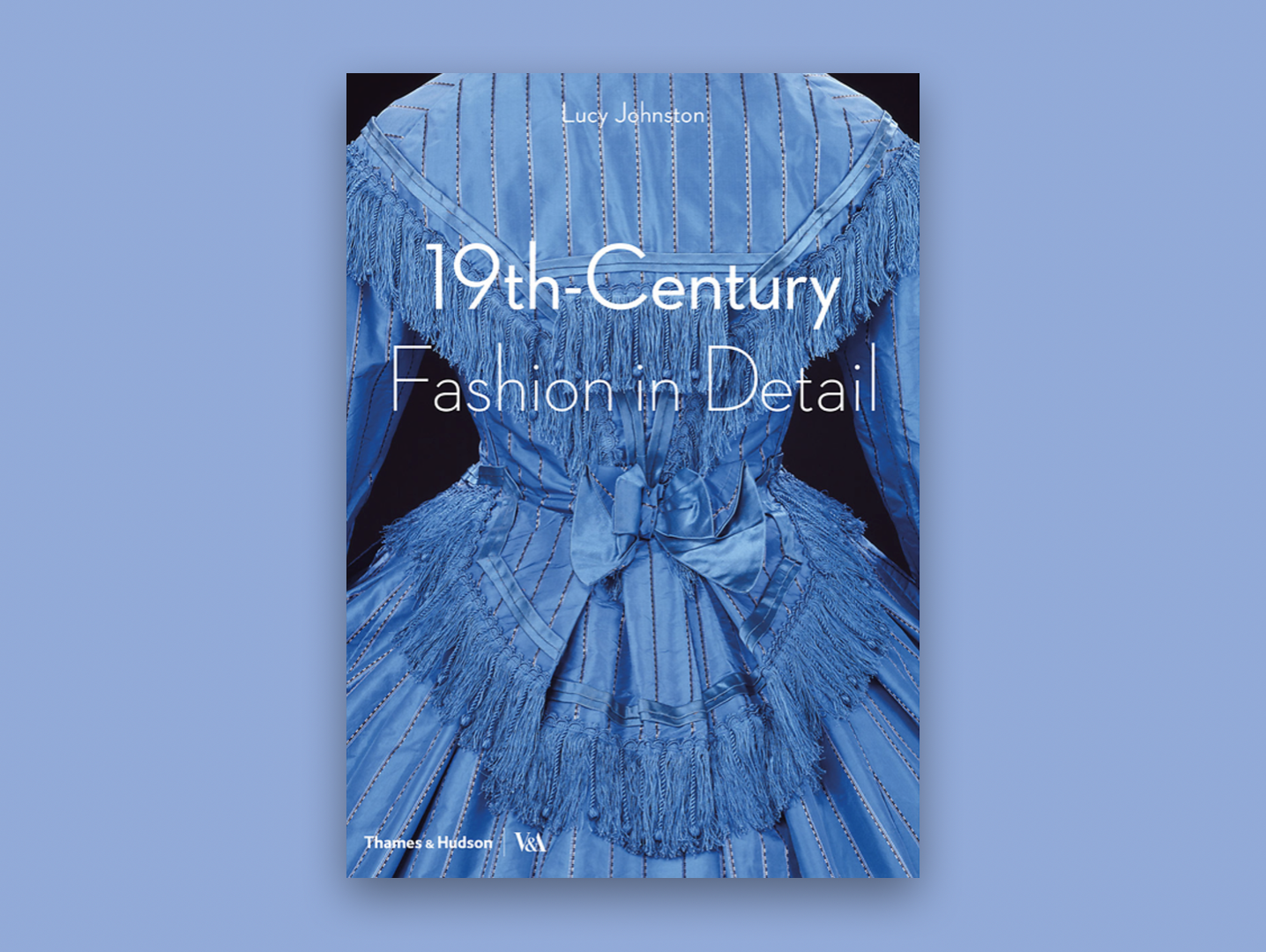Book Review: 19th-Century Fashion in Detail
Lucy Johnston with Marion Kite and Helen Persson, 19th-Century Fashion in Detail, Thames & Hudson, $34.95, 240 pp., December 2016
The premise of Lucy Johnston’s book, an updated re-issue of a 2005 publication of the same name, is that details matter. Seams, stitches, closure, buttons, woven surfaces, patterns, collars and cuffs—all, and more—take center stage in new and beautifully-rendered photographs. Images aside, while focusing on the smallest of details, the book opens a window to a panoramic view of the life men and women experienced throughout the nineteenth-century. In that respect, it is a comprehensive study of nineteenth-century fashion that goes well beyond the miniscule details.
450 illustrations are grouped thematically to highlight how garments in the nineteenth-century were made and worn. These objects, drawn from the expansive costume collection at the Victoria & Albert Museum in London, are often too fragile to display or handle. The publication therefore allows scholars, researchers, and fashion historians to examine them in great detail. The line drawings that accompany each photograph are especially invaluable for those who are interested in the evolution of shapes and silhouettes. They allow readers to “zoom-out,” so to speak, to a wider context.
The 2016 revised publication opens with an introduction that cleverly provides a survey of the trends and themes that dominated the nineteenth-century without falling into the usual, artificial decade-by decade breakdown. Instead, periods spanning ten to twenty-five years are lumped according to a defining style. The first fifteen years of the century, for example, saw a shift from Greek and Roman influences evident in the fashion for diaphanous muslin gowns to a much more ornate style, heavily influenced by the Napoleonic Wars. The authors illustrate this evolution of styles by weaving in technological, social, and cultural changes that propelled them or, conversely, were propelled by them. Such an example is the decrease in the size of sleeves and a move toward downward, sloping lines in the 1830s and forties, influenced by Gothic forms and the social expectation that women be restrained and gracious. A more commonly-known example is the introduction of many technological innovations in the Great Exhibit of 1851, most notably the sewing machine, which changed how fashion was produced, traded, and worn from that point on.
The authors freely go back and forth in time and introduce themes in overlapping periods. A time period titled “Reform: 1860-1900,” highlights a clash between relaxation of dress codes and conservative social norms that dominated the late Victorian era. In menswear, the lounge coat became fashionable as daywear of less restrictive and shorter fit. It required less tailoring and was cheaper to produce; as a result, it was quickly adopted by both the middle and working classes, which in turn challenged the traditional distinction between master and laborer, through dress. By the 1880s, these more relaxed, functional notions infiltrated women’s dress as well. Women—who now not only shopped and promenaded, but also played sports in mixed company—were happy to take inspiration from men’s clothing for functional daywear. It was also the time of the Rational Dress Society and the Aesthetic Movement, which advocated for less constrictive clothing. Conversely, for most Victorian women, these ideas were too advanced; it was not until almost two decades into the twentieth-century that uncorseted shapes became fashionable.
“Those with the patience to read the one to three paragraph-long descriptions will be rewarded with a treasure trove of information. ”
After setting the scene, the authors delve deep into the details. In the nine chapters that follow they do not leave a stone unturned. Those with the patience to read the one to three paragraph-long descriptions will be rewarded with a treasure trove of information. Each description is an opportunity to enrich readers’ understandings of different facets of nineteenth-century life. A close-up of the waistline belonging to a promenade bodice and skirt from mid-century showcases a passion for elaborate decorations. Tiny, swirling buttons draw the eyes from the waist up, while layers of chenille passementerie in orange and black emphasizes the expansion of the skirt from the nipped-in waist outward. The authors link the cascading trims to the rich interiors in which these clothes lived; Luxurious tasseled home textiles and fringed furniture were a perfect backdrop for this extravagant day dress and show that fashion both reflects and influences the spirit of the time.
A major focus in the book are the technological advancements that dominated and influenced fashion. It is the center of a chapter titled “Innovations,” but are also woven throughout the other chapters. A surprising revelation was that a simple invention in 1818 of the tape measure revolutionized tailoring. Until then, tailors had to rely on strips of parchment paper which were placed along the body and cut to reflect various lengths and widths. The tape measure allowed tailors to speed up the measuring process and produced accurate, consistent numbers. In this book readers are invited to literally peek inside the seams. Clever construction details, hidden closures, and rarely seen undergarments illustrate that innovation in the nineteenth-century was not always seen, but was unquestionably felt.
Another favorite chapter is “Embroidery” in which the opulence of the era is fully realized through close-ups of numerous labor-intensive embroidery techniques. This chapter and others illustrate that the fashions of the nineteenth-century are unmatched. Flipping through this book one will be dazzled by the colors, textures, textiles, and shapes. The exceptional, high-quality photographs shed light on this unique century in which proper women had to change their entire outfit several times a day and fashion trends were almost as quick to change as they do today. While 19th-Century Fashion in Detail, is a comprehensive resource for costumers and scholars who study dress history, it will be enjoyed by every lover of fashion. The book is sprinkled with so much knowledge and enthusiasm for the topic, that anyone can find something to take away once the last page has been turned.



